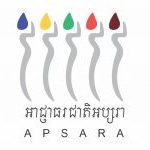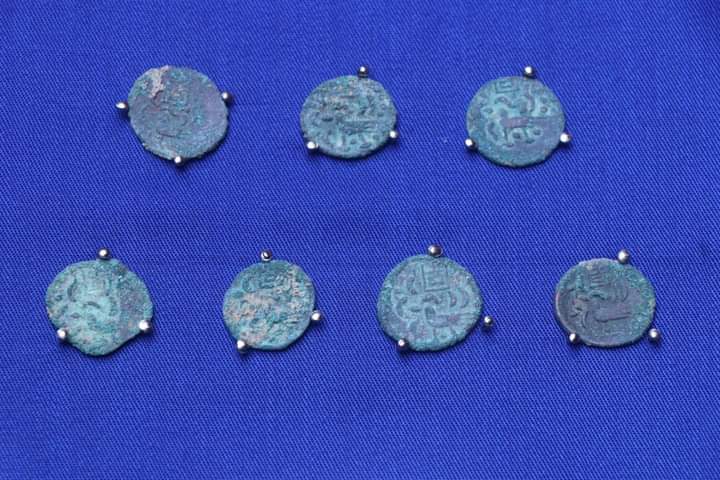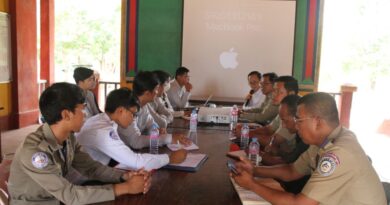ក្រុមការងារជួសជុលព្រះវិហារវត្តល្អក់របស់អាជ្ញាធរជាតិអប្សរា បានប្រទះឃើញប្រាក់កាស(ស្លឹង)បុរាណសរុបទាំងអស់ប្រមាណ១១៦កាស ដែលគេបញ្ចុះនៅតាមជើងសសររបស់ព្រះវិហារវត្តល្អក់ ឬហៅវត្តអរញ្ញរង្សី ដែលស្ថិតនៅឃុំកណ្តែក ស្រុកប្រាសាទបាគង ខេត្តសៀមរាប កាលពីពេលថ្មីៗ។
កាសបុរាណ ដែលគេប្រទះឃើញទាំងនោះ មានបីប្រភេទ ដោយកាសនីមួយៗមានទំហំពី១៣-១៥មីលីម៉ែត្រ មានរូបសត្វ«ហង្ស» មួយបែបទៀតក៏មានរូប«ហង្ស»ដែរ តែលាយដោយអក្សរចិនអានថា«ជី»មានន័យថា«សំណាងល្អ»និងកាសម្យ៉ាងទៀតមានអក្សរថា«ព្រះតំបង» ឯផ្ទៃម្ខាងទៀតមានរូបគ្រុឌ។
សហប្រធានសារមន្ទីរសេដ្ឋកិច្ច និងរូបិយវត្ថុ ព្រះស្រីឦសានវរ្ម័ន លោក ប្លែស គីលីយ៉ង់ បានពន្យល់ថា កាសដែលមានរូប«ហង្ស»គឺបានបោះពុម្ព ឱ្យប្រើប្រាស់នៅស្រុកខ្មែរចាប់ពីអំឡុងសតវត្សរ៍ទី១៦-១៩នៃគ្រីស្ដសករាជ ឯកាសមួយបែបទៀត មានរូប«ហង្ស»ដែរនិងមានអក្សរចិនអានថា«ជី»នោះ ភាគច្រើនបានបោះពុម្ព និងដាក់ឱ្យចរាចរនៅខេត្តបាត់ដំបងក្នុងអំឡុងសតវត្សរ៍ទី១៩។ ចំណែកកាសមួយប្រភេទទៀត មានអក្សរថា«ព្រះតំបង» ហើយផ្ទៃម្ខាងទៀតមានរូបគ្រុឌគឺបោះពុម្ព និងចរាចរនៅខេត្តបាត់ដំបង អំឡុងនាសតវត្សរ៍ទី១៩។
គេដឹងថា ព្រះវិហារវត្តល្អក់ មានតម្លៃប្រវត្តិសាស្ត្រ ទាំងវិស័យសាសនា និងសិល្បៈដោយសារតែវត្តនេះមានអាយុកាលយូរលង់មកហើយ។ វត្តល្អក់ បានសាងសង់ឡើងដោយគ្រឿងបង្គុំធ្វើអំពីឈើ ដំបូលប្រក់ក្បឿង ជញ្ជាំងជុំវិញធ្វើពីឥដ្ឋបូកកំបោរបាយអរ។ សំណង់នេះ មានសសរ៤ជួរ ដោយមាន២ជួរនៅកណ្តាលជាសសរកន្លោងនិង២ជួរទៀតជាសសរជើងរាង។ បច្ចុប្បន្នសសរឈើរបស់ព្រះវិហារ ដែលកប់ក្នុងដីជាច្រើនឆ្នាំមកហើយ កំពុងមានភាពពុកផុយខូចខាតខ្លាំង ដែលអាចបង្កគ្រោះថ្នាក់ដល់ការស្នាក់នៅរបស់ព្រះសង្ឃ ហើយវាទាមទារឱ្យក្រុមអ្នកជំនាញធ្វើការជួសជុលជាចាំបាច់៕
អត្ថបទ និងរូបភាព៖ នាយកដ្ឋានគ្រប់គ្រងដីធ្លី បេតិកភណ្ឌក្រុង និងសហគមន៍
APSARA National Authority’s restoration team found a total of 116 ancient coins buried at the pillars of Laok Pagoda, also known as Wat Aranh Rainsy, located in Kandek commune, Prasat Bakong district, Siem Reap province.
Three types of ancient coins were found, each measuring 13-15 mm in size, with the image of a swan with the Chinese character “Ji” which means “good luck” and the other coin had the words “Preah Tambong” on the other side with the image of Garuda.
Bless Gilliang, co-director of the Preah Srey Içanavarman Museum, explains that the swan coin was printed in Cambodia from the 16th to 19th centuries AD. Also, the Chinese character “Ji”, most of which were printed and put into circulation in Battambang during the 19th century. The other type of coin has the word “Preah Tambong” and the other side has a Garuda image, printed and circulated in Battambang during the 19th century.
It is known that the Buddhist vihara of Laok Pagoda has historical value in both religion and art because this pagoda has a long history. The Laok Pagoda was built with wooden components, tiled roofs, and brick walls around the mortar. The building has four rows of pillars. Currently, the wooden pillars of the Buddhist vihara, which have been buried in the ground for many years, are in a state of disrepair, which could endanger the monks and it requires experts to make necessary repairs.
Article and Photos: Department of Land Management, Urban Heritage and Community





